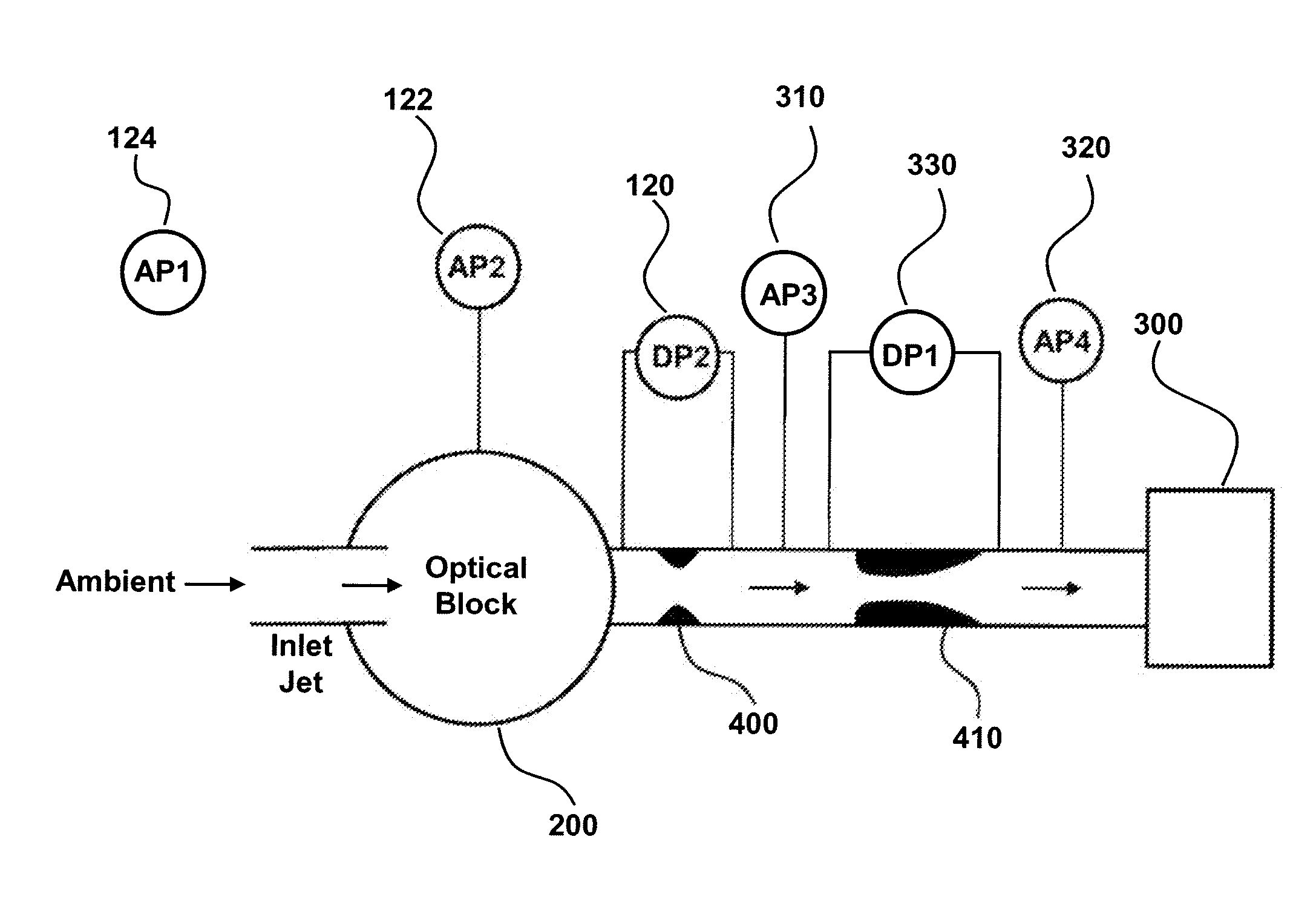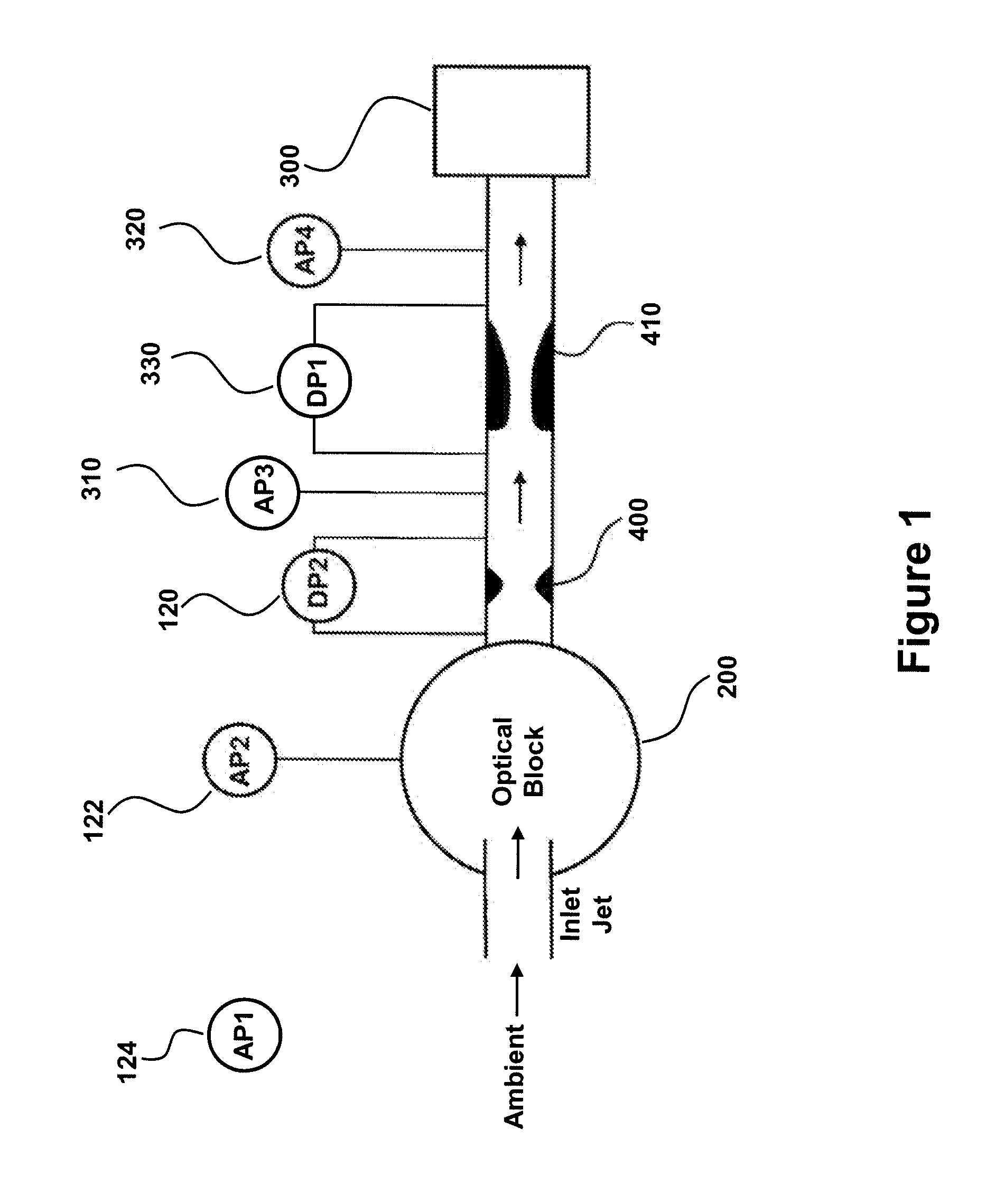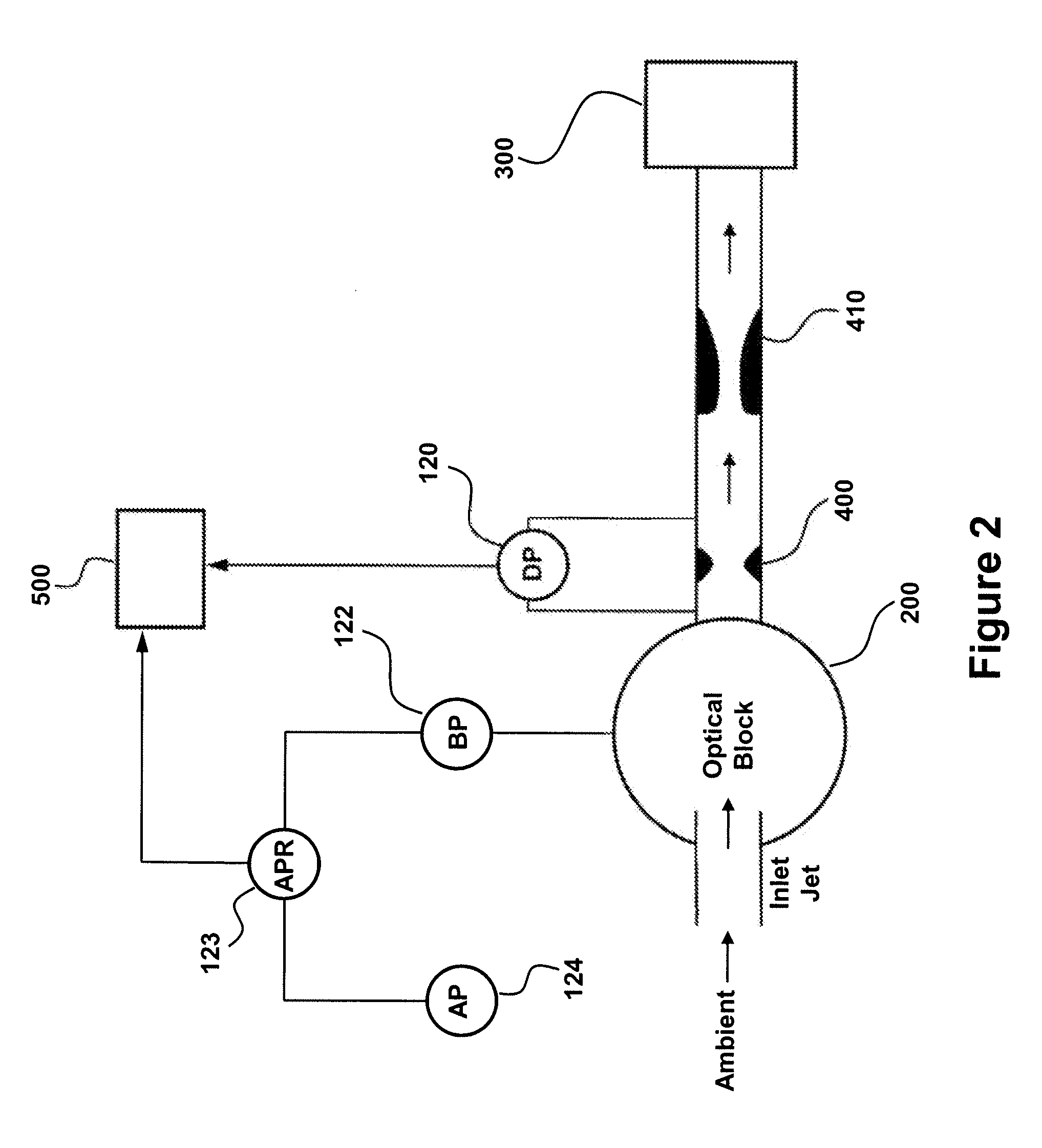Flow monitored particle sensor
- Summary
- Abstract
- Description
- Claims
- Application Information
AI Technical Summary
Benefits of technology
Problems solved by technology
Method used
Image
Examples
example1
Critical Flow Orifice for Controlling Flow-Rate
[0062]The required critical pressure drop needed is given by the following equation.
Pv / Pa=[2 / (k+1)]k / (k-1) (1)
[0063]Pv=Pressure on vacuum side of critical flow orifice
[0064]Pa=Pressure on upstream side of critical flow orifice
[0065]k=Gas specific heat ratio=7 / 5 for diatomic gases=1.4
[0066]Substituting 1.4 for k yields the simplified equation:
Pv / Pa=0.53 (2)
[0067]At standard conditions Pa=14.7 psi. Therefore, the required critical pressure drop at standard conditions is 7.791 psi (15.9″ Hg).
[0068]At standard conditions a critical flow orifice will maintain constant volumetric flow when the downstream vacuum level is greater than 15.9″ Hg. Under these conditions the velocity in the throat of the orifice is the speed of sound, and a further increase in the downstream vacuum level does not increase the velocity through the throat. Most prior art particle sensors utilize a knife-edge critical flow orifice. This requires the user to provi...
example 2
Low-Cost Flow Monitoring
[0070]FIG. 1 details the fluidic design features of a particle sensor that may be used to intelligently monitor flow rate. The particle sensor includes an inlet jet from which ambient air is drawn from the ambient environment into the optical block 200 of the particle sensor. The optical block is the portion of the system that performs the particle detection, as particles suspended in the moving air are drawn through a laser beam and scatter light energy before exiting the optical block.
[0071]The air is drawn through a flow measurement orifice 400. The differential pressure 120 across this orifice is used to measure the flow rate through the particle sensor. This differential pressure is minimized as its pressure drop is added directly to the required pressure drop of the critical flow orifice. The air is then drawn through a venturi critical flow orifice 410 before being pulled out of the sensor by the external vacuum system 300. The critical flow orifice is...
example3
Algorithm for Identifying Flow Condition
[0095]Provided is a device and method for monitoring volumetric flow rate in a particle sensor by the use of one low cost differential pressure sensor and two low cost absolute pressure sensors. The focus of this method is to produce a low cost intelligent flow monitoring solution that is both better than 10% accurate (e.g., capable of reliably detecting a 10% or greater deviation from a target flow rate) and inexpensive.
[0096]One example of a suitable differential pressure sensor 120 is a Freescale® Semiconductor MPXV5004DP. This sensor has an accuracy specification of + / −2.5% full scale, through a temperature range of + / −5° C. from calibration temperature. The flow measurement orifice in the particle sensor can be sized to operate the differential pressure sensor at near full scale.
[0097]Since the accuracy is not specified beyond a temperature range exceeding + / −5° C. C, the additional error will need to be empirically derived. A reasonable ...
PUM
 Login to View More
Login to View More Abstract
Description
Claims
Application Information
 Login to View More
Login to View More - R&D
- Intellectual Property
- Life Sciences
- Materials
- Tech Scout
- Unparalleled Data Quality
- Higher Quality Content
- 60% Fewer Hallucinations
Browse by: Latest US Patents, China's latest patents, Technical Efficacy Thesaurus, Application Domain, Technology Topic, Popular Technical Reports.
© 2025 PatSnap. All rights reserved.Legal|Privacy policy|Modern Slavery Act Transparency Statement|Sitemap|About US| Contact US: help@patsnap.com



